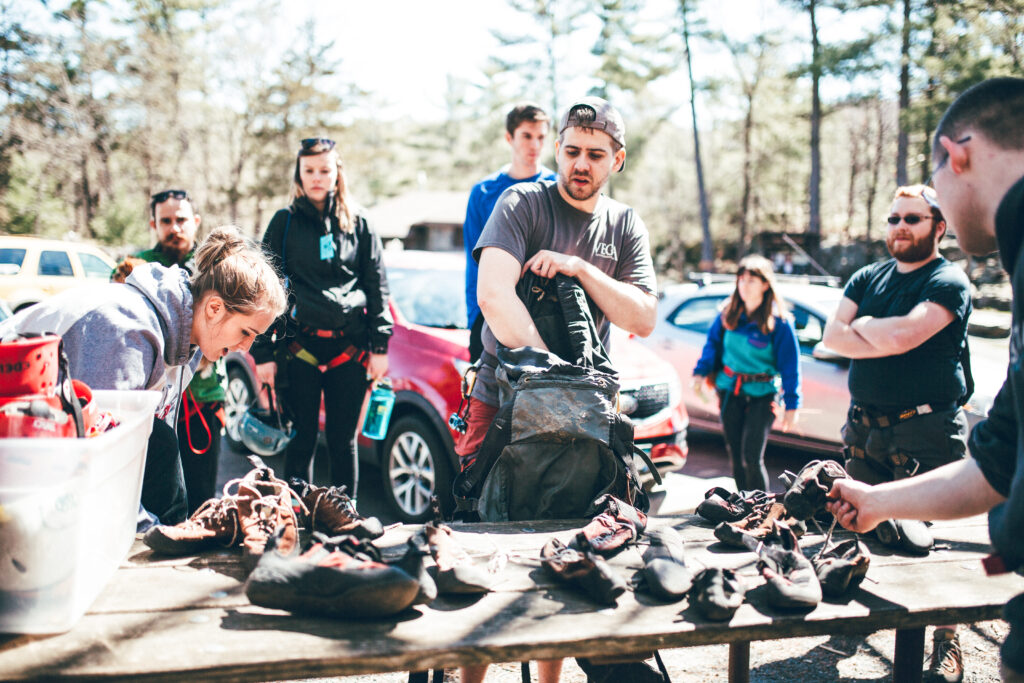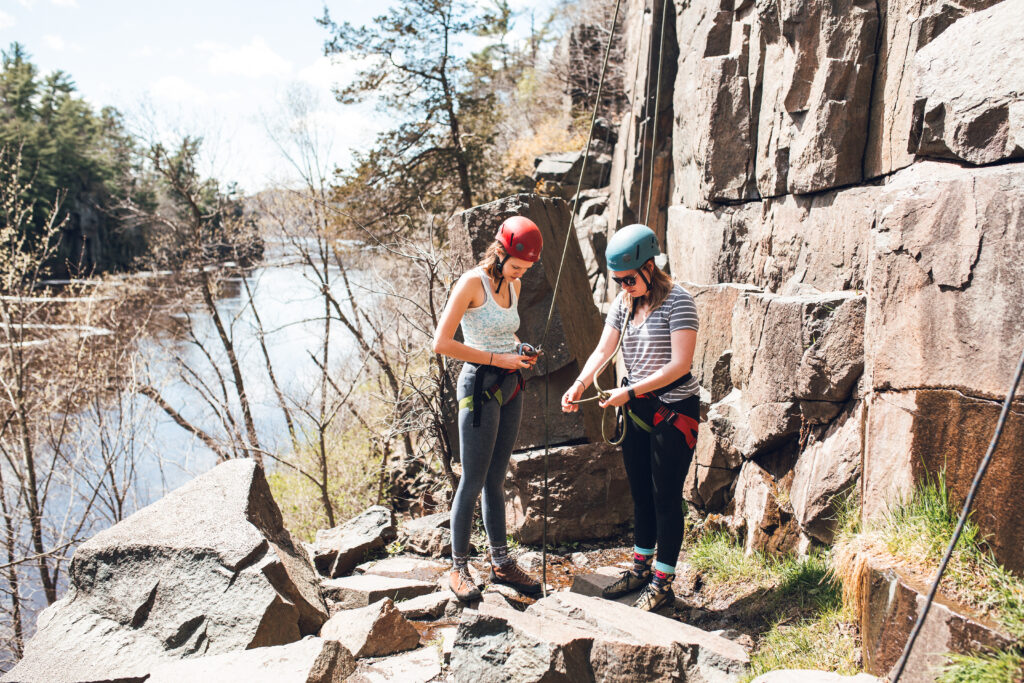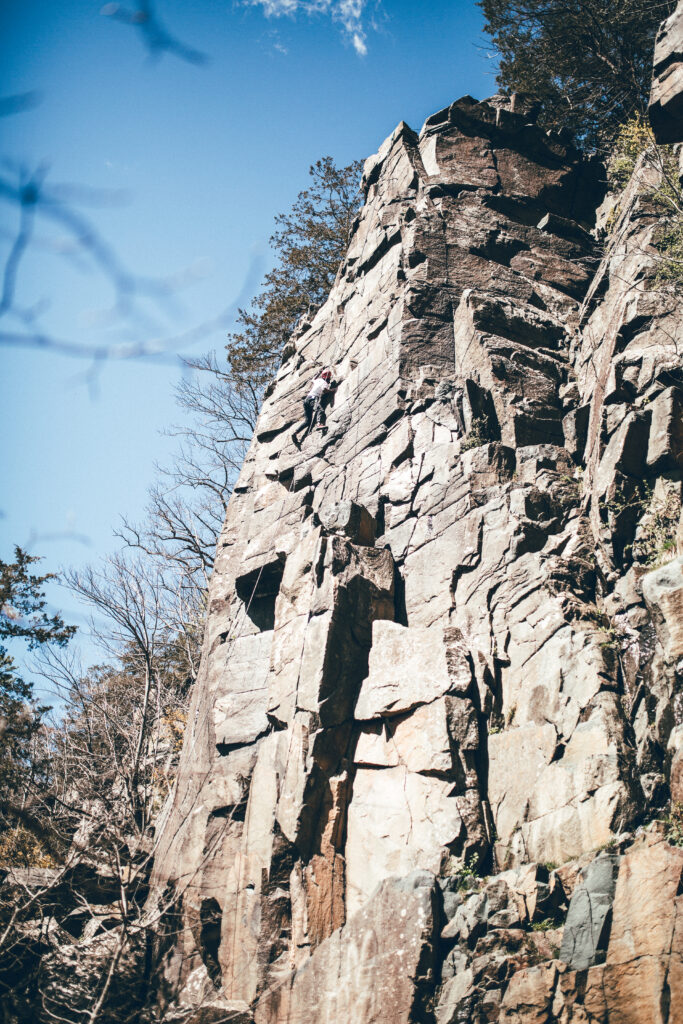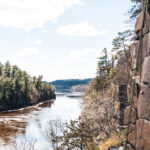Moving from Indoor Climbing to Outdoors
Indoor climbing has become an increasingly popular sport. It is a great way to stay active, have fun, get/stay in shape, and challenge yourself mentally and physically. At some point, some who have only climbed indoors begin to think about venturing outdoors to climb. However, transitioning to outdoor climbing can be intimidating. Climbing outdoors requires a different set of skills and equipment than indoor climbing, and it’s important to be prepared for the unique challenges that come with climbing on real rock. Let’s explore the transition from indoor climbing to climbing outdoors, and I will provide a few tips for making the switch safely and confidently.
The first step in transitioning to outdoor climbing is to build a solid foundation of indoor climbing skills. This means developing good technique, understanding climbing terminology, and becoming comfortable with the gear, equipment, and safety protocols used in indoor climbing. Indoor climbing gyms offer a great environment for practicing and honing these skills, with a wide variety of routes and challenges to from which to choose.

Once you feel confident in your indoor climbing abilities, it is time to start thinking about climbing outside. One of the biggest differences between indoor and outdoor climbing is the type of rock you’ll be climbing on. While indoor climbing walls are typically made of artificial materials like plastic or resin, outdoor climbing involves real rock formations that are often rough, uneven, and unpredictable. As a result, outdoor climbing requires a different approach to technique and footwork.
Before you head outside, it’s important to find someone who has experience with outdoor climbing to “show you the ropes,” both literally and figuratively speaking. This person can help guide you through the transition process, teach you the necessary skills, and provide tips on technique and safety. They can also help you choose suitable climbing routes and location based on your skill level and experience.
Vertical Endeavors provides trained guides and guided adventures through VEGA

When it comes to gear, outdoor climbing requires additional equipment than indoor climbing. In addition to your climbing shoes, harness, and chalk bag, you’ll need gear like climbing ropes, anchors, and protection devices. It is important to invest in the appropriate gear that is designed for outdoor use and to learn how to use it properly.
One of the biggest challenges of outdoor climbing is the mental aspect. Climbing outside can be a humbling experience, as real rock formations can be much more difficult to climb than the artificial routes found in indoor gyms. It is important to approach outdoor climbing with a growth mindset, embracing the challenges and setbacks as opportunities to learn and improve. It’s also important to trust your gear and your partner(s), and to communicate effectively throughout the climb.
When first starting to climb outdoors, it is important to choose routes that are appropriate for your skill level and experience. This means selecting climbs that are well within your ability level, with easy to moderate grades and good protection. As you gain more experience and confidence, you can gradually start to take on more challenging routes and push yourself to new heights. . . oops, I did it again! (Puns are fun.)

Another important consideration when transitioning to outdoor climbing is the environment. Climbing outdoors requires a different level of respect for the natural world than indoor climbing. It is important to leave no trace, minimizing your impact on the environment, and respecting the local wildlife. This means packing out all of your trash and using designated bathroom facilities, if available. It is also important to be aware of any rules or regulations regarding climbing in the area, and to respect the local landowners and community members.
Transitioning from indoor climbing to climbing outdoors can be an exciting and rewarding experience. It requires a solid foundation of indoor climbing skills, a willingness to learn and adapt to new challenges, and a respect for the natural environment. Additionally, working with an experienced climbing partner is essential to gain the knowledge and confidence necessary for taking the next step in your climbing adventure.
Climbing is dangerous, it involves inherent and other risks and cannot be eliminated. The information presented here does not describe all of the risks associated with climbing and is not intended to replace or supersede expert instruction and training.
© 2023 Vertical Endeavors, Inc. All rights reserved. The contents of this article, photographs, and graphical representations are protected by U.S. and International copyright laws. Reproduction and distribution, in part or whole, without written permission from Vertical Endeavors are prohibited. The opinions and information contained in this article are for entertainment and informative purposes. They are those of the author and may not represent those of Vertical Endeavors, and do not necessarily reflect the ideas, ideologies, opinions, or points of view of the organization, affiliates, owners, stockholders, partners, suppliers, licensors or staff. Under no circumstances shall Vertical Endeavors or any entity that are, have been, or will be affiliated be liable for any indirect, incidental, consequential, special, or exemplary damages arising out of or in connection with the information contained in this article.

